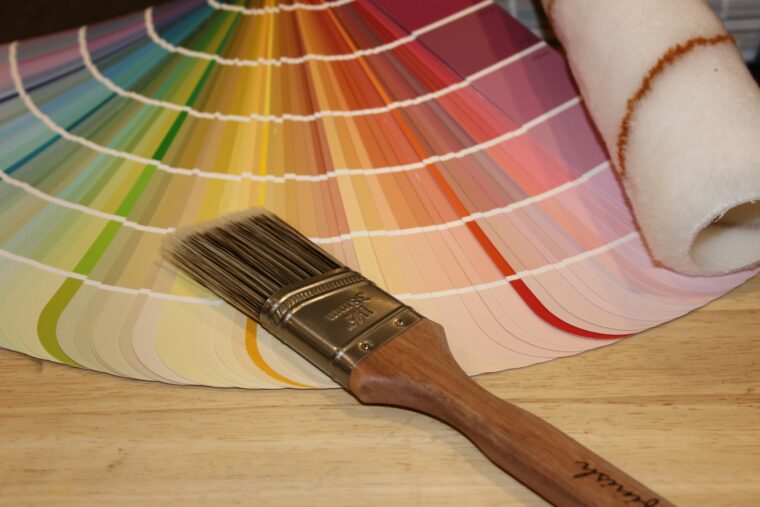Introduction: Why Colors Matter in Your Home
Ever walked into a room and felt instantly calm or oddly energized? That’s not magic—it’s the power of color. Choosing the right color palette isn’t just about aesthetics. It shapes how you feel, how others feel in your space, and how your home reflects your personality.
Let’s dive into how to choose a color palette that brings your space to life without overwhelming it.
Understanding Color Psychology
How Colors Influence Mood
Colors are emotional cues. Think of blue—it often evokes calmness and serenity. Red? Passion, energy, and sometimes hunger (thanks, McDonald’s!). Your choice of color can set the emotional tone for every room in your house.
Colors That Energize vs. Relax
- Energizing Colors: Red, orange, and yellow are high-energy and perfect for lively areas like kitchens or gyms.
- Relaxing Colors: Blues, greens, and lavenders are ideal for bedrooms and bathrooms.
Identifying Your Personal Style
Modern vs. Traditional
Are you more into clean lines and bold accents (modern) or ornate patterns and warm tones (traditional)? Knowing your style will help narrow your color options.
Minimalist vs. Maximalist
- Minimalists lean toward neutral tones and monochromatic palettes.
- Maximalists might enjoy mixing vibrant, contrasting colors to express personality.
Start with a Base Color
Choosing a Neutral Foundation
Start with a neutral base like white, beige, grey, or greige (yes, it’s a thing!). Neutrals make it easier to layer in accent colors without overwhelming the space.
Testing Shades in Different Lights
A beige might look cream in daylight and yellow at night. Always test paint samples on multiple walls and observe them at various times of day.
Use the 60-30-10 Rule
What It Means
This classic design principle breaks down like this:
- 60% dominant color (walls)
- 30% secondary color (upholstery/furniture)
- 10% accent color (accessories)
Applying It Room by Room
In your living room, 60% could be a soft grey wall, 30% a navy sofa, and 10% mustard throw pillows. It keeps your room balanced and visually interesting.
Consider Room Functionality
Best Colors for Bedrooms
Go for soft blues, lavenders, or even warm greys. These shades encourage rest and relaxation.
Best Colors for Kitchens and Bathrooms
- Kitchens shine with yellows, whites, and light greens—colors that spark energy.
- Bathrooms feel fresh with aqua, cool greys, or sandy tones.
Natural Light vs. Artificial Light
How Light Changes Color Appearance
A white wall can look yellow in a room with warm lighting and blue in cooler lighting. That’s why you should never paint without seeing how light interacts with your colors.
Tips for North vs. South Facing Rooms
- North-facing rooms tend to be cooler—use warmer tones.
- South-facing rooms have more natural light—cooler colors can balance it out.
Use a Color Wheel to Create Harmony
Analogous vs. Complementary Colors
- Analogous colors sit next to each other on the wheel (like blue, green, and turquoise) and give a calming effect.
- Complementary colors (like blue and orange) create bold contrast.
Creating Contrast with Confidence
Use complementary colors sparingly to make a room pop—like an orange pillow on a navy chair.
Don’t Forget the Ceilings and Floors
Color Flow from Top to Bottom
Many overlook ceilings—painting them a lighter shade of the wall color can open up the space.
Choosing Floor Tones That Anchor Your Palette
Whether it’s warm wood or sleek tile, your floor color sets the tone for the entire room.
Trends vs. Timeless Choices
When to Follow Trends
Trends can add freshness. Go for trendy colors in accessories like pillows, rugs, and wall art.
How to Make Trendy Colors Last Longer
Pair them with timeless neutrals so you can switch out trendy accents without repainting everything.
Sample Paints Before You Commit
Swatches Are Not Just for Fashion
Don’t rely solely on paper swatches. Buy small sample pots and paint a test section on your wall.
Test and Observe at Different Times of Day
Light changes throughout the day—check how your test areas look in the morning, noon, and evening.
Inspiration from Nature and Art
Pulling Colors from Landscapes
Nature’s palettes—sunsets, beaches, forests—are already perfectly balanced. Use them as inspiration for a soothing space.
Using Art Pieces as Color Anchors
Got a painting or a rug you love? Pull 2–3 colors from it to build your room’s color story.
Mistakes to Avoid
Overloading with Too Many Colors
Too many colors = chaos. Stick to 3–5 main shades per room to maintain balance.
Ignoring the Undertones
Beige isn’t just beige—it might have pink, yellow, or green undertones. Always compare undertones when mixing colors.
Bringing It All Together
Using Apps and Tools
Apps like Sherwin-Williams ColorSnap or Benjamin Moore’s Color Portfolio let you preview colors in your space.
When to Call a Professional
If you’re overwhelmed, consult an interior designer or color expert. It might just save you time and paint!
Conclusion: Creating Your Perfect Color Story
Choosing the right color palette is part art, part science—but all heart. Your home should feel like you, comfort you, and energize you. Use your instincts, play around, and don’t be afraid to break a few “rules” to make it truly yours.
FAQs
1. What color makes a small room look bigger?
Light and neutral colors like white, pale grey, and soft beige reflect more light, making the room feel spacious.
2. How do I match colors across different rooms?
Stick to a cohesive palette with a consistent base color, and vary the accents for each room to keep things interesting.
3. Should all rooms in a house be the same color?
Not at all! But they should complement each other. Use a unified base tone to maintain flow.
4. Can I mix warm and cool colors?
Yes! Mixing warm and cool tones adds depth and contrast—just keep balance in mind.
5. What’s the best way to pick an accent color?
Use an existing item—like art or a rug—as inspiration. Pick a bold color from it and repeat it in small doses throughout the room.
